The violet-backed starling (Cinnyricinclus leucogaster) is a stunning bird species found across sub-Saharan Africa. Males are particularly striking with their iridescent violet plumage that shimmers in the sunlight, contrasting sharply with their white underparts. Females, while more subdued in color with their brown and white streaked appearance, are equally captivating and play a crucial role in nesting and rearing their young.

These birds are typically found in open woodlands, forest edges, and savannas, where they feed on a diet primarily consisting of fruits and insects. Violet-backed starlings are often seen in pairs or small flocks, and they exhibit a strong preference for fig trees, which provide both food and nesting sites. During the breeding season, males display their vibrant plumage and sing to attract mates, while both parents share the responsibility of caring for their offspring.
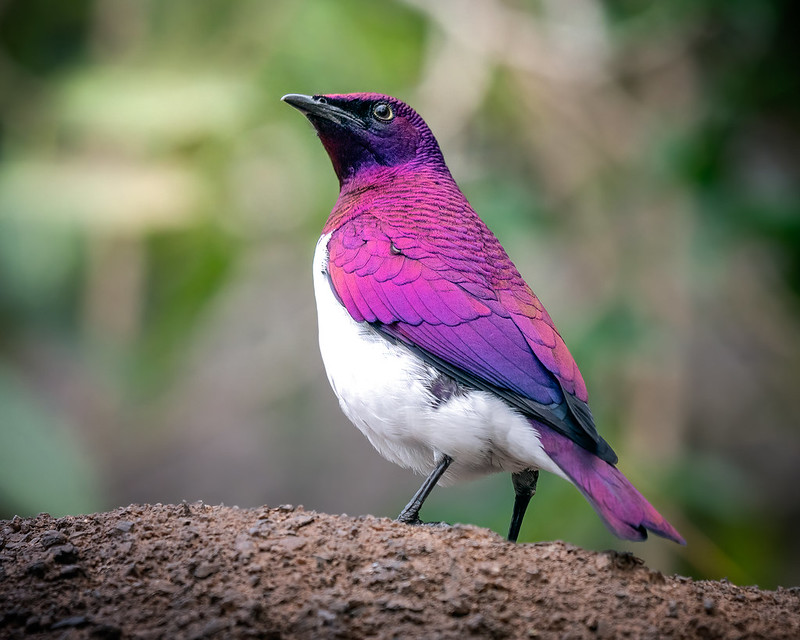

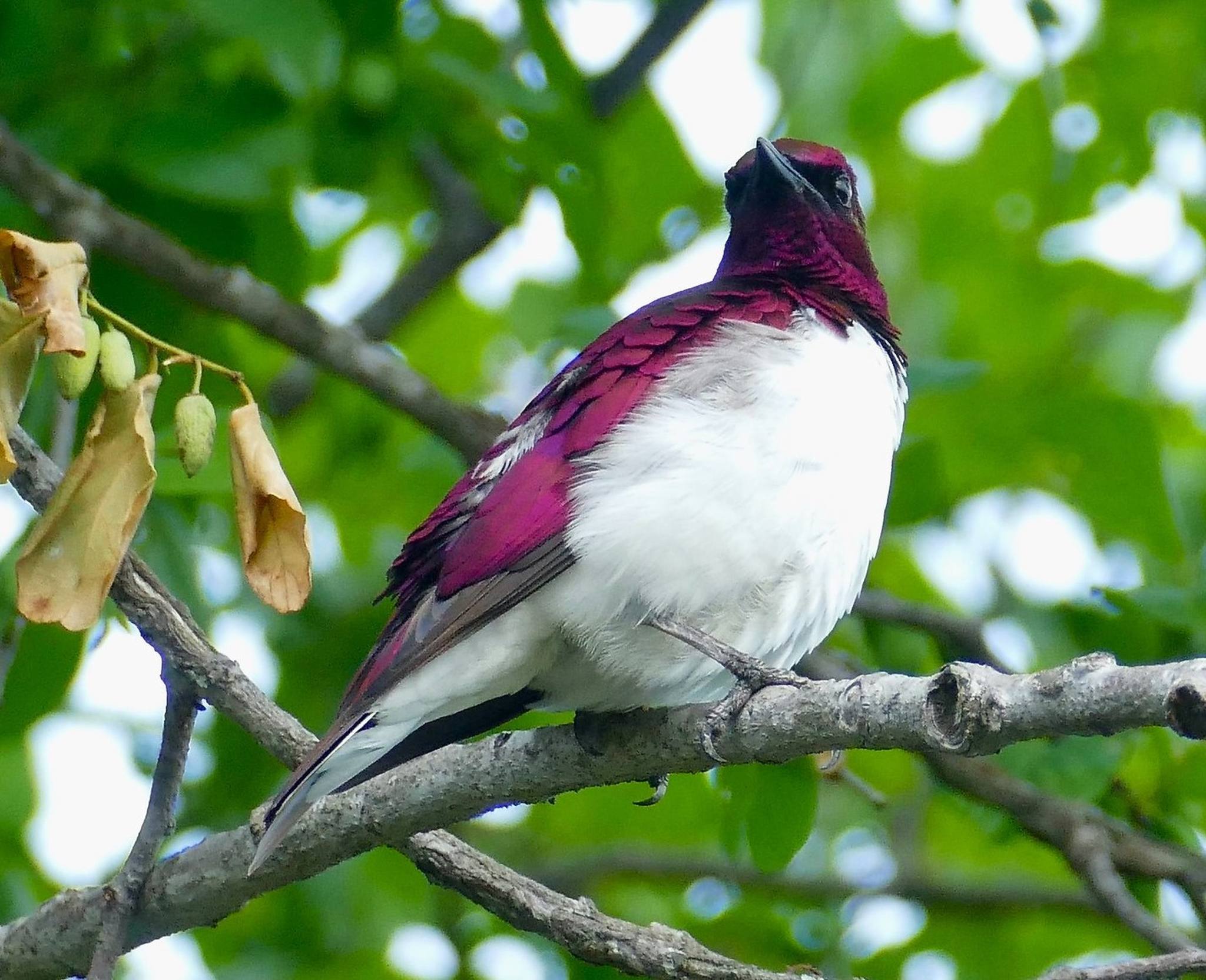
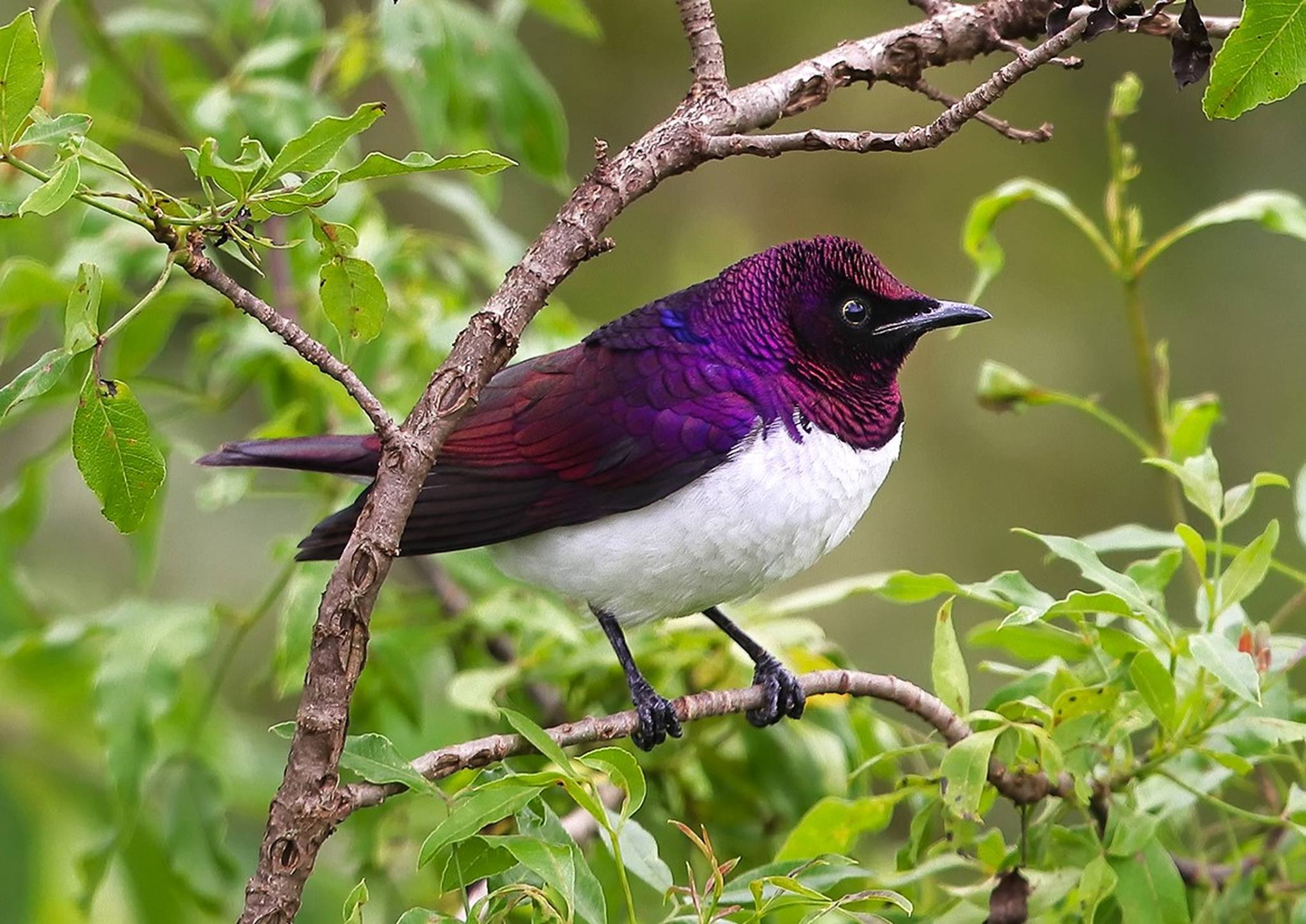
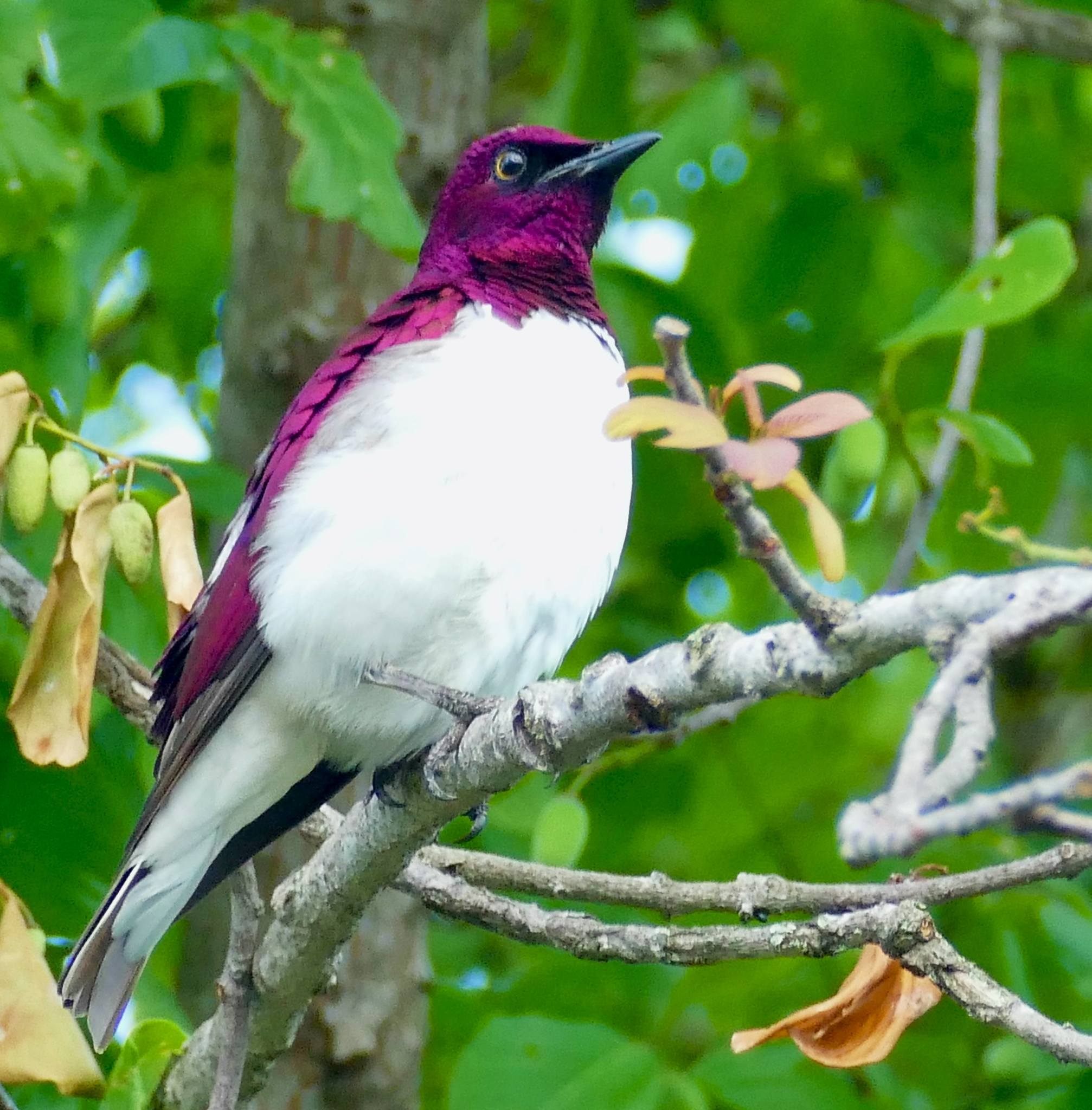
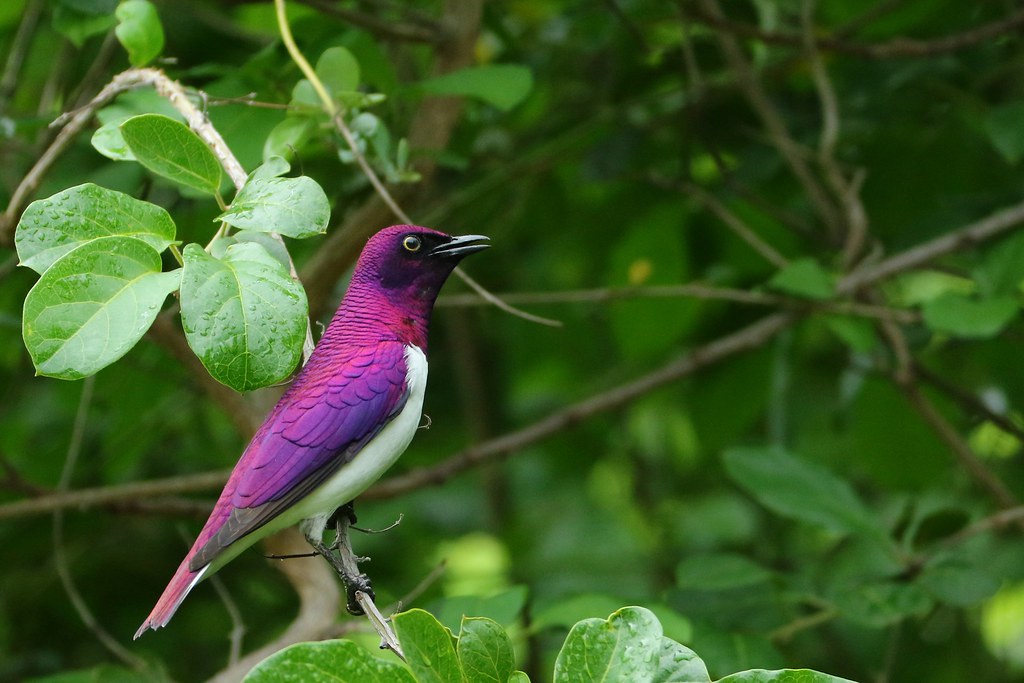
The violet-backed starling is an important species for their ecosystem, aiding in seed dispersal and insect population control. Their presence helps maintain the ecological balance within their habitats. Although they are currently not considered threatened, ongoing habitat destruction and fragmentation pose potential risks to their populations. Conservation efforts focused on preserving their natural habitats are essential to ensure the continued survival of these dazzling birds.